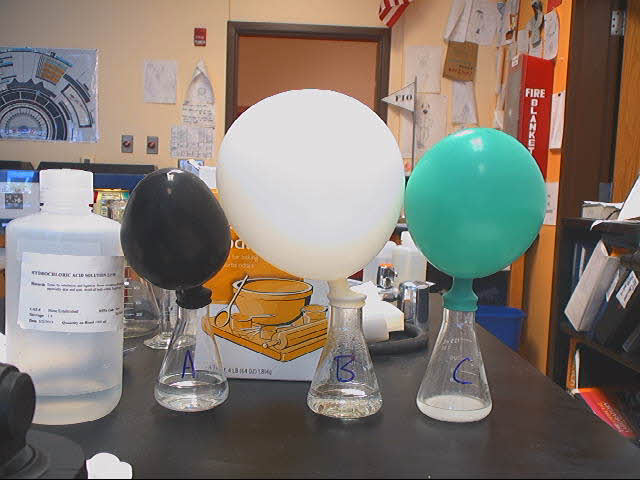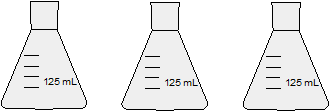
This activity belongs with the Stoichiometry Group Activity and Homework.
And with the Limiting Reactant and Percent Yield Activity and Homework.
Last Updated: May 05, 2015 Home
Chemical reactions are different from recipes for baked goods. In your kitchen you could add too much baking soda and make the cookies taste terrible. If you get the proportion wrong, the cookies are a completely different product. Chemical reactions, on the other hand, work as written no matter how much of each ingredient you add. The reactants, or ingredients as it were, always react in the correct proportion and still make the same products. If there is not enough of one reactant the reaction will proceed until it is used up. The other reactant will simply have some leftover.
In this activity you will work in a small group to answer an inquiry question. Different amount of hydrochloric acid and baking soda (sodium hydrogen carbonate) will be mixed and will react according to the following equation:
The reaction will take place in a small erlenmeyer flask with a balloon on the top. The carbon dioxide produced in the reaction will fill the balloon. Depending on the amounts of the reactants, the balloons will fill to different extents. Your task is the answer the following question:
One note about the hydrochloric acid. The concentration that will be used has 2.0 moles of HCl per liter of solution. This is abbreviated in two ways: 2.0 mol/L or 2.0 M.
In order to find the number of moles of HCl in a certain volume of this solution just treat the concentration like a conversion factor. So 150 mL of a 2.0 M solution has the following number of moles of the solute:
1 L 2.0 mol
150 mL × ---------------- × ---------------- = 0.300 mol HCl
1000 mL 1 L
Do all work in the space provided on this page (front and/or back) and be prepared to share your results and your calculations with the class.

| A 50 mL HCl 2.0 g NaHCO3 |
B 50 mL HCl 8.4 g NaHCO3 |
C 20 mL HCl 10 g NaHCO3 |